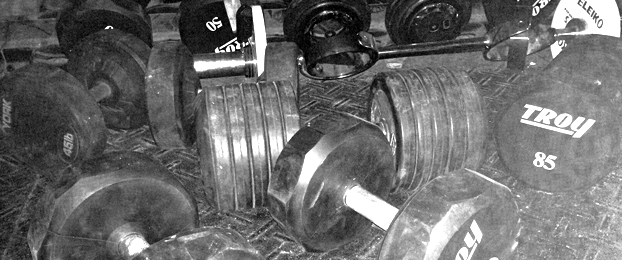
In Part 1 of this series, I went into some detail on why I really didn’t like the catch all term “impingement.” In Part 2, I’m going to talk about the different kinds of impingement—external and internal.
External impingement, also known as outlet impingement, is the one we hear about the most. Here, we’re dealing with compression of the rotator cuff (usually the supraspinatus, and over time, the infraspinatus and biceps tendon) by the undersurface of the acromion. This happens much more frequently in ordinary, weekend warriors and is very common in lifters. It’s definitely more prevalent in older populations.
External impingement can be further subdivided into primary and secondary classifications. In primary impingement, the cause is related to the acromion because of either bone spurring or congenital shape. In the photo below, hook (II) and beak (III) are worse than flat (I), as there are marked differences in “clearance” under the acromion.

On the other hand, secondary impingement is usually related to poor scapular stability (related to both tightness and weakness), which alters the position of the scapula. In both cases, pain is at the front and/or side of the shoulder and is irritated with overhead activity, scapular protraction, and several other activities (depending on the severity of the tissue problems). You’ll also generally see a lack of external rotation range-of-motion because these are folks who do too much bench pressing and computer work (both of which shorten the internal rotators).
Conversely, internal impingement, also known as posterosuperior impingement, really wasn’t proposed until the early 1990s. This form of impingement is more common in younger individuals who are involved in overhead sports, making it more of an “athletic impingement.” Adaptive shortening and scarring of the posterior rotator cuff and posterior capsule in these athletes causes a loss of internal rotation and an upward translation of the humeral head during the late cocking phase of throwing (or swimming)—external rotation and abduction.

When the humeral head translates superiorly excessively in this position, it impinges on the posterior labrum and glenoid (socket), irritating the rotator cuff and biceps tendon along the way. So, pain usually starts in the back of the shoulder due to irritation of the posterior fibers of the supraspinatus and anterior fibers of the infraspinatus tendons. Gradually, this pain may “shift” toward the front of the biceps tendon, which implies labral involvement.
We often hear about “SLAP” lesions in the news. This refers to a superior labrum, anterior-posterior injury. In reality, when we’re talking about labral injuries in overhead athletes as they relate to internal impingement, it’s mostly just posterior (although serious cases can eventually affect the anterior labrum, too). There are different kinds of SLAP lesions (1–4). Every baseball pitcher you’ll meet has a SLAP 1, which is just fraying. SLAP 2 lesions are far more serious and often require surgical intervention. SLAP 1 issues become SLAP 2 lesions when internal rotation deficits (and a few other asymmetries) aren’t kept within normal limits.
So, just to bring you up to speed, we’ve got two different kinds of impingement, one of which (external) has two subcategories that mandate different treatment strategies (primary = surgery, secondary = corrective exercise). We also have two separate areas where pain occurs (external = front/side, internal = back). That’s just the tip of the iceberg, though, as we have two more considerations…
First, symptomatic internal impingement tends to be mechanical pain. Unless you’re dealing with a more advanced case, athletes with symptomatic internal impingement only have pain when they get into the late cocking phase (and sometimes follow through). It usually isn’t present when they’re just sitting around. For this reason, they can usually be more aggressive in the weight room with upper body training. Keep in mind that I use the term “symptomatic” because I think that internal impingement is a physiological norm, just like I observed in Part 2 with external impingement.
Second, and perhaps more importantly, you are dealing with two rotator cuff tears that are—as Barack Obama would say—“fundamentally different.” It’s these differences that make me think that doctors need to—as John McCain would say—“repudiate” the term “impingement.” Here’s the scoop…
Let’s say that we have two guys with partial thickness tears of the supraspinatus—one from external impingement and one from internal impingement. With external impingement, we’re usually dealing with an extra-articular/bursal tear because the rubbing comes from the top (acromion). These issues will generally heal more quickly because the bursa actually has a decent blood supply.
On the other hand, with internal impingement, we’ve got an articular tear, meaning that the wear on the tendon comes from underneath (glenoid). The tear is more interstitial in nature. Blood supply isn’t quite as good in this area so healing is slower (or nonexistent). Traditionally, articular tears have been viewed as athletic injuries, and bursal have been a general population issue. This is not always the case though.
Factoring in the activity demands of overhead throwers, they have more challenging tears and greater functional demands. Fortunately, they also typically have age and tissue quality on their side so things tend to even out.
With all these factors in mind, if a doctor ever tells you that you have “impingement,” ask:
- Is it internal or external?
- If external, is it primary or secondary? (It’ll probably be both)
- If internal, is there labral involvement? Biceps tendon?
- If internal, what is the internal rotator deficit? (They should measure it because this will begin to dictate the rehabilitation plan)
- Given my age, activity level, and the nature of the tear, do you feel that surgical or conservative treatment is best?
Hopefully, this article series has given you a bit more background on how to be a more informed patient should these issues become symptomatic. And, more importantly, I hope you take some of the knowledge from Part 1 to heart in keeping yourself healthy in the first place.








